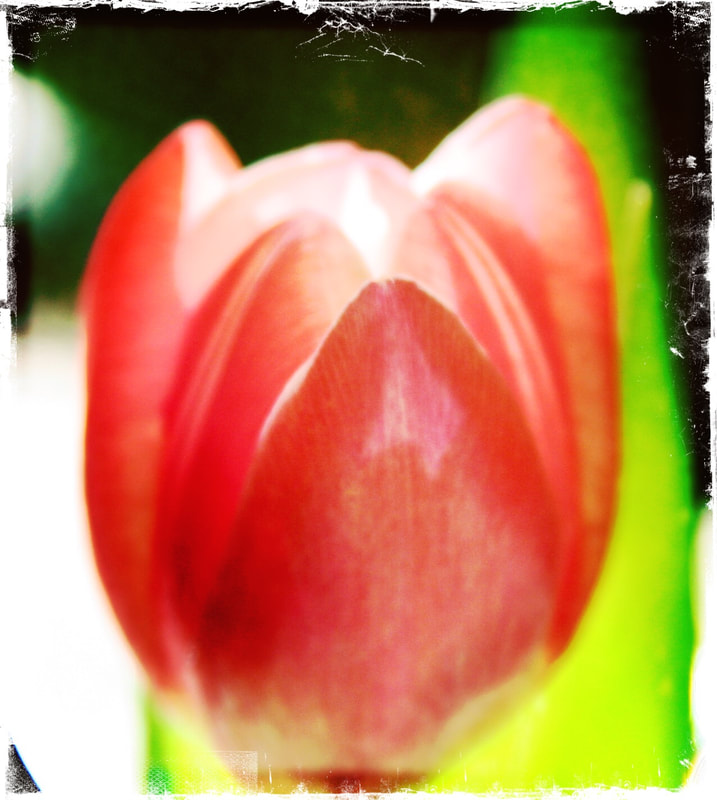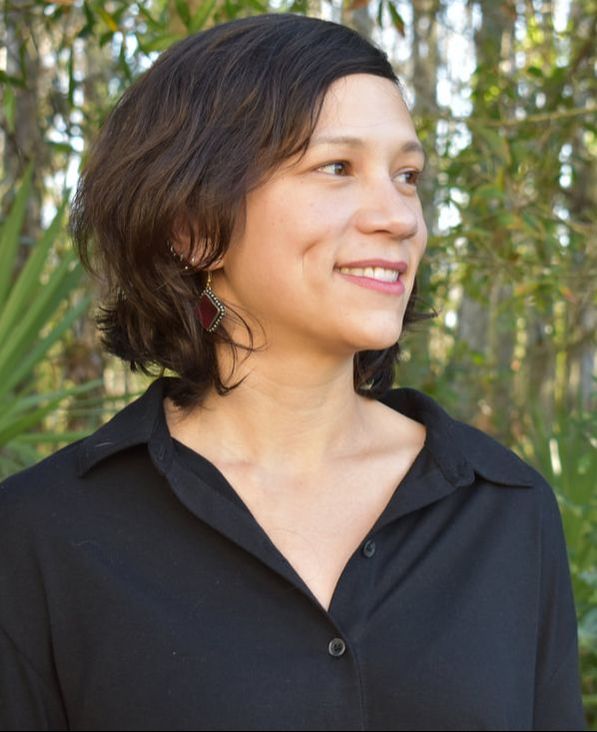ASSAY: A JOURNAL OF NONFICTION STUDIES
5.1
5.1
|
Though it feels very timely to events of 2018, Valeria Luiselli’s book Tell Me How It Ends: An Essay in Forty Questions begins in the summer of 2014 and ends in a postscript dated 2017. It was neither written nor published as newsfeeds were filled with stories of families torn apart at the border, but it does provide additional context for the horrific circumstances surrounding child immigration. The book informs, and it also advocates for individuals to take action toward change. I’ll admit that when I bought the book back in March of this year, I didn’t know what to expect. I’d heard good things about her novels, and so when I saw that Luiselli had written a book-length essay, I added it to my purchase from Coffee House Press in that third-day AWP book-buying fever. Its cover is minimalist: a black small caps serif font on a parchment background, no image. Anything could be inside.
Luiselli is herself an immigrant, and in the summer of 2014, we open the book to find her and her family—her husband, her daughter, and her husband’s son—on a road trip from New York to Arizona. It’s a vacation, but one that becomes heavy with implications. While traveling southwest, news arrives of “the wave of children arriving, alone and undocumented, along the border.” As Luiselli and her family continue their journey, the news becomes increasingly horrifying and the public response to the presence of the children becomes more strange and sad. To complicate matters further, Luiselli, her husband, and her daughter are waiting for their green cards. Her husband’s son is visiting from Mexico. The family’s perspective shifts: the absurdity of the word “alien” on their recent immigration forms becomes less a subject for wordplay and jokes and more a term that dehumanizes and helps to justify the mass deportation of children. When Luiselli’s family returns to New York, everyone’s green card except hers has arrived, and she must begin the process of petitions and queries to find out what has happened. Luiselli writes, “Ever since I was left somewhat alone, without gods, I have been a ferocious believer in the power of small coincidences. That is how chance works, at least for those of us who do not have the certainty of grander schemes.” As a result of her missing green card, she is put in touch with the American Immigration Lawyers Association; soon afterward, she begins to volunteer as a translator for undocumented children. __________
The book’s subtitle and structure are taken from the intake questionnaire for unaccompanied child migrants. It’s not the formal experiment I’d anticipated. Instead, the questions are what we return to, again and again. Because this is an essay rather than a memoir, ideas are what take center stage. Through expository paragraphs, the reader traces a brief history of a two-year span of time through Luiselli’s mind as she navigates her green card process and works as a translator.
The more personal essay sections in this book tackle the enormous question of why immigrate to the United States. Luiselli writes, “Sometimes I ask myself the same question. I don’t have an answer yet. Before coming . . . I knew what others know: the cruelty of its borders was only a thin crust, and that on the other side a possible life was waiting.” By the coda, Luiselli’s green card has arrived, and though it’s satisfying (and relieving) to learn, that particular mystery was never the largest driving force in the book. Instead, what reads as more urgent in the personal sections is the implicit argument for taking action. Luiselli’s nineteen-year-old niece, whose life was “a wild a beautiful mess,” finds the time to volunteer at The Door alongside Luiselli. The staff members making up the nonprofit are also young women. At Hofstra University where Luiselli teaches, among other courses, a class called Advanced Conversation, students create an organization to provide support to recently-immigrated teenagers with goals to partner with existing nonprofits: “It only take a group of ten motivated students to begin making a small difference.” However, this is an essay in forty questions, and so even the argument for taking action is complicated through the prose—though that does not mean she is advocating for defeat or complacency; rather, Luiselli is realistic. From the coda: “I know it’ll take much more than the meteoric enthusiasm of a bunch of college kids to resist the dark years ahead.” Even further complicating is the fact that despite these personal sections, it is ultimately the questionnaire, the research, and the experiences of the children Luiselli interviews that are foregrounded in Tell Me How it Ends. And these subjects are not easy or simple. The sources listed for the book are predominantly newspaper articles; however, the statistics Luiselli includes about the migration across Mexico to the United Stated are unbearable. Eighty percent of women and girls are raped. The National Human Rights Commission in Mexico reported that the number of abductions from April to September 2010 was 11,333. In Pima County, Arizona, “more than 2,200 human remains have been registered since 2001, the majority of which are still unidentified.” If this book tells the reader anything, it is that the horrors of immigration have been ongoing for many, many years. By incorporating such research, Luiselli strengthens her essay’s argument that some form of action (or many forms of action) need(s) to take place. Much of the prose in Tell Me How It Ends explains the process of coming to the United States through the interviewed children’s stories, written into a broader narrative: Most unaccompanied minors from Central America make the trip through Mexico on La Bestia, a freight train, accompanied by a coyote. Once at the United States border, the coyote leaves the child, who then tries to turn themselves in to a Border Patrol agent as quickly as possible. Though the circumstances of their containment (in the now-infamous icebox) for untold days afterward are miserable, such treatment is ultimately less dangerous (in most cases) than attempting to cross the southwestern desert that spans much of the United States alone. One of the minors Luiselli interviews speaks of the “immense relief” he feels when he sees two Border Patrol agents exit their cars and move toward him after two days in the desert. Once with Border Patrol, children attempt to contact their family members in the United States—either parents or other relatives—who can act as their sponsor. At the time of Tell Me How it Ends, unaccompanied minors were given twenty-one days to find a lawyer to represent them in court in their quest for immigration relief. This time window was a massive decrease from the twelve months it had originally been before the “immigration crisis” was declared. The reason for the updated three-week period was the creation of a priority juvenile docket, what Luiselli calls “the government’s coldest, cruelest possible answer to the arrival of refugee children” and, ultimately, what exacerbates the urgent need for volunteers like Luiselli (as well as paid professionals). But as crushing as a twenty-one day window seems, even worse is the exception to this process that occurs when a child is Mexican. In that case: If a Border Patrol officer, upon detaining and screening a Mexican child, determines that this child (1) is not a victim of a severe form of trafficking in persons, (2) is not at risk of trafficking upon return, (3) does not have a “credible fear” of persecution, and (4) is able to make an independent decision about returning, then the officer is entitled to deport the child. The officers are not required to document the rationale behind the decision. This process is called a “voluntary return” and has been legally backed since 2008.
__________
Like most good essays, Luiselli doesn’t leave us with an easy answer or solution. This is fitting, as the problem of her subject is immensely complex. The book’s title, Tell Me How It Ends, appears as a refrain throughout the book as a question Luiselli’s daughter asks, “How does the story of those children end?” to Luiselli can only reply, “I don’t know.” Once inside the United States, the difficulties and tragedies don’t stop. Though numerous children appear in brief flashes and scenes, the book also tracks the story of one particular child, Manu, whom Luiselli translates for during his initial intake in New York and then again later when his case is picked up by a large law firm. Manu is a good candidate for immigration relief because he comes to The Door, where Luiselli is volunteering, with a copy of a police report from his home city. He filed the document against local gangs, MS-13 and Barrio 18, who were trying to recruit him and his friend. The police never took action, and some months later, he and his friend were shot at after school. Manu’s friend was killed, and the next day, his family made arrangements for Manu to leave for the United States.
Because he kept a copy of the police report, it is likely that Manu will be allowed to stay permanently with his family in New York. The great irony, though, is that when Luiselli meets Manu a second time, he is missing his two front teeth. The same two gangs he fled from are active at his new school in Hempstead, New York, and they, too, want to recruit him. These problems of drug trafficking and gang violence, Luiselli writes, “are not a problem circumscribed to a small geographic area.” Rather, it’s essential that “we begin talking about the drug war as a hemispheric war, at least—one that begins in the Great Lakes of the northern United States and ends in the mountains of Celaque in southern Honduras.” It is impossible to say how it will end for these children. It is the flexibility of the essay that allows for these different facets of Luiselli’s experience—her green card and her volunteer work—to come together alongside research and the stories of migrant children in the service of asking what a person can do to help ameliorate the problem. That Luiselli has expanded the essay into book-length form allows her an even broader scope. Other contemporary book-length essays (or essay collections that pivot very tightly around one central subject) that use the form similarly to explore complex topics, though differing wildly in subject matter, include Sonya Huber’s Pain Woman Takes Your Keys, and Other Essays from a Nervous System, Kristin Dombek’s The Selfishness of Others: An Essay on the Fear of Narcissism, and Elissa Washuta’s My Body is a Book of Rules. Each of these tracks the mind as it tackles an unsolvable problem, an unanswerable question. In the case of Tell Me How it Ends, Luiselli’s thought is clearly: Something must be done. However, how exactly to do this thing, or what it is, remains unclear. Her argument is that we all must do what we can to help, and that may look different from person to person. The story of the children is ongoing, but what remains is the importance of its telling: “And it must be told, because before anything can be understood, it has to be narrated many times, in many different words and from many different angles, by many different minds.” Luiselli is essaying the world; here is her contribution. |

